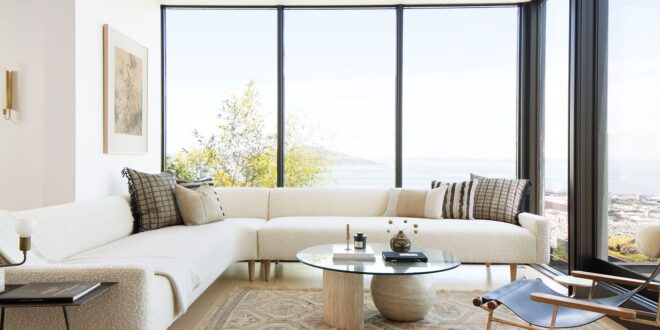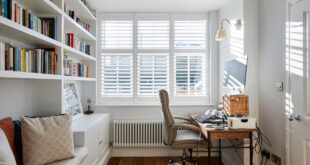The Allure of Scandinavian Living: More Than Just Minimalism
Scandinavian living rooms. The very phrase conjures up images of light-filled spaces, cozy textures, and a sense of serene simplicity. But it’s more than just a trendy aesthetic; it’s a philosophy, a way of life deeply rooted in the principles of hygge (pronounced hoo-gah) – that feeling of warmth, comfort, and contentment. It’s about creating a sanctuary where you can truly relax and recharge, surrounded by beauty and functionality.
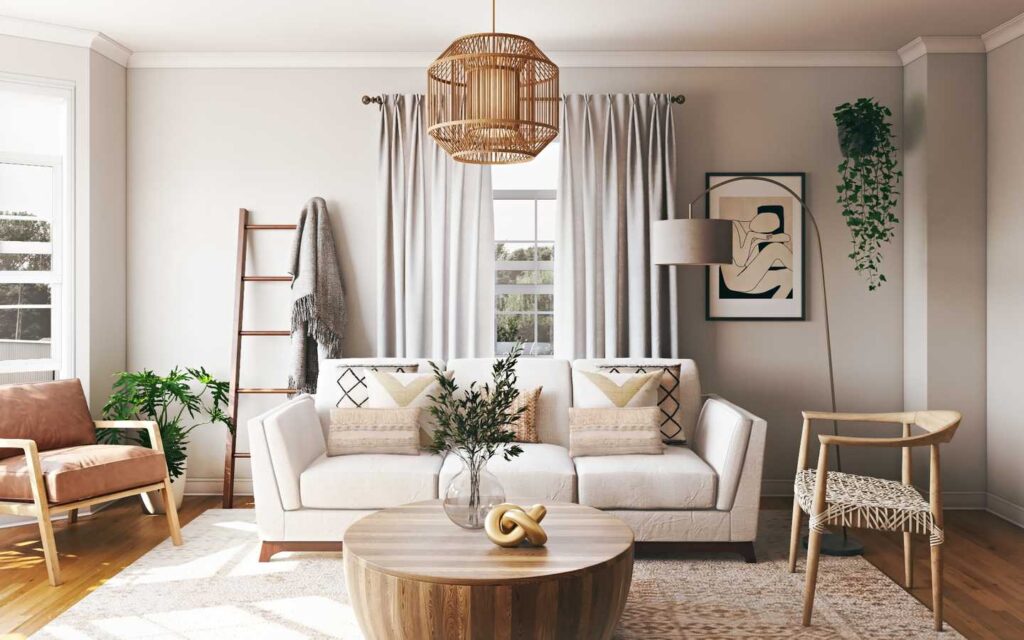
While the core tenets of Scandinavian design – minimalism, functionality, and natural light – are well-known, truly mastering the Scandinavian living room layout requires a deeper understanding. It’s not just about decluttering and painting the walls white (though that’s a good start!). It’s about thoughtfully arranging furniture, incorporating textures, and creating a harmonious flow that promotes both relaxation and social interaction. It’s a balance – a dance between form and function that results in a space that’s not just beautiful to look at, but also a joy to inhabit.
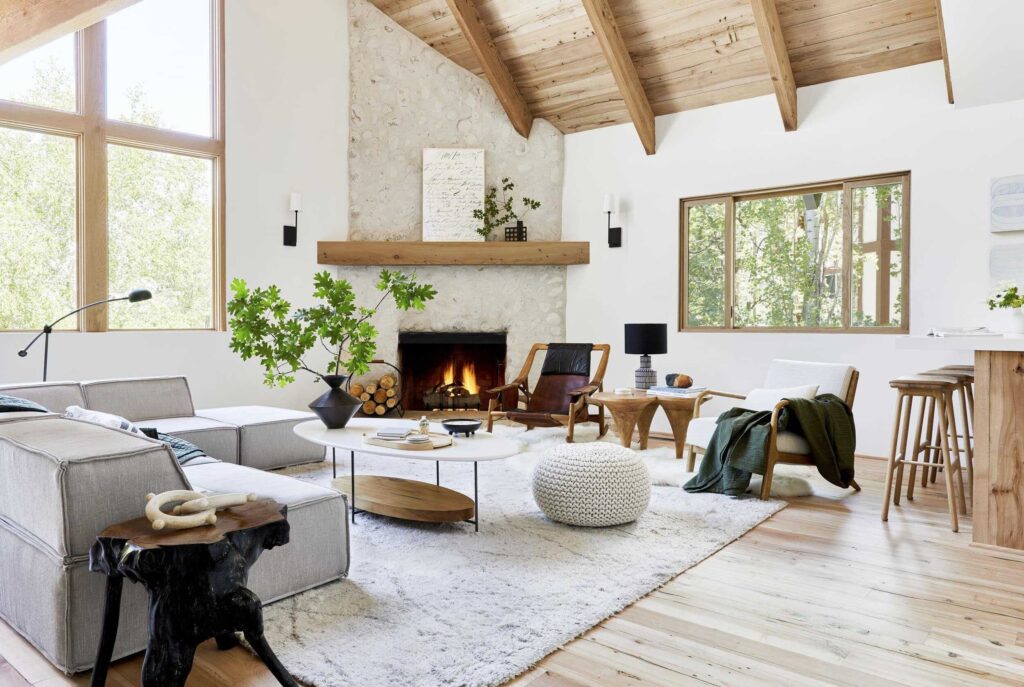
Deconstructing the Scandinavian Living Room Layout: Key Elements
Let’s break down the essential elements that contribute to a successful Scandinavian living room layout:
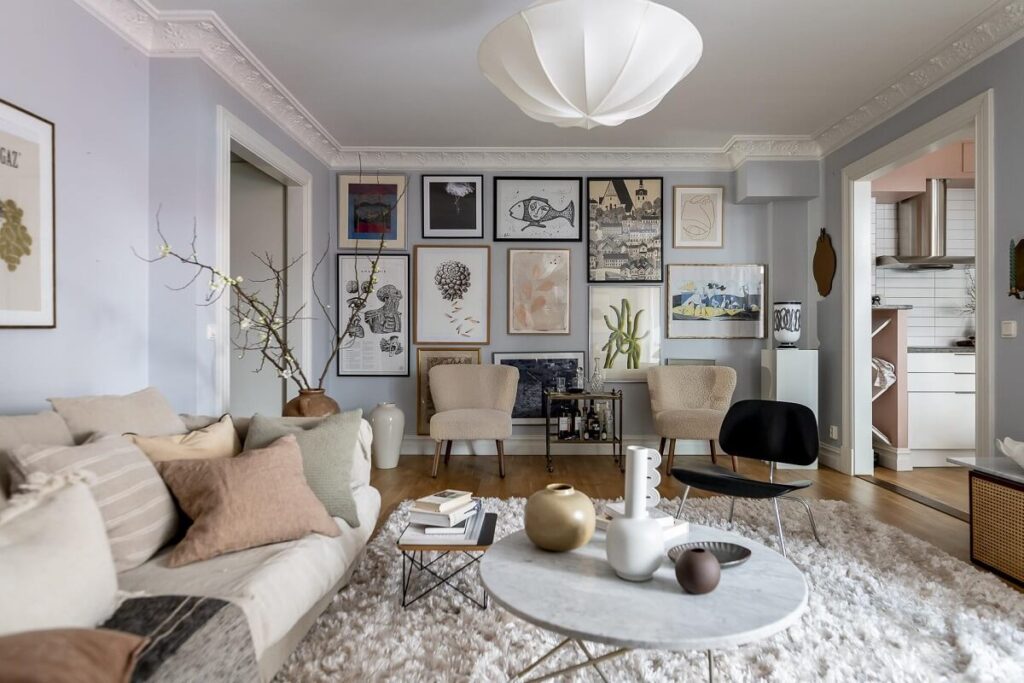
1. The Power of Natural Light: The Foundation of Scandinavian Design
Light is paramount. In Scandinavia, where winters are long and daylight hours are scarce, maximizing natural light is crucial. This explains the prevalence of white walls, large windows, and minimal window coverings. The goal is to bathe the room in as much natural light as possible, creating a bright and airy atmosphere. Forget heavy drapes; think sheer curtains or blinds that allow light to filter through while still providing privacy. Consider strategically placing mirrors to reflect and amplify the light further. Even the placement of furniture can impact how light flows through the space – avoid blocking windows with large pieces.
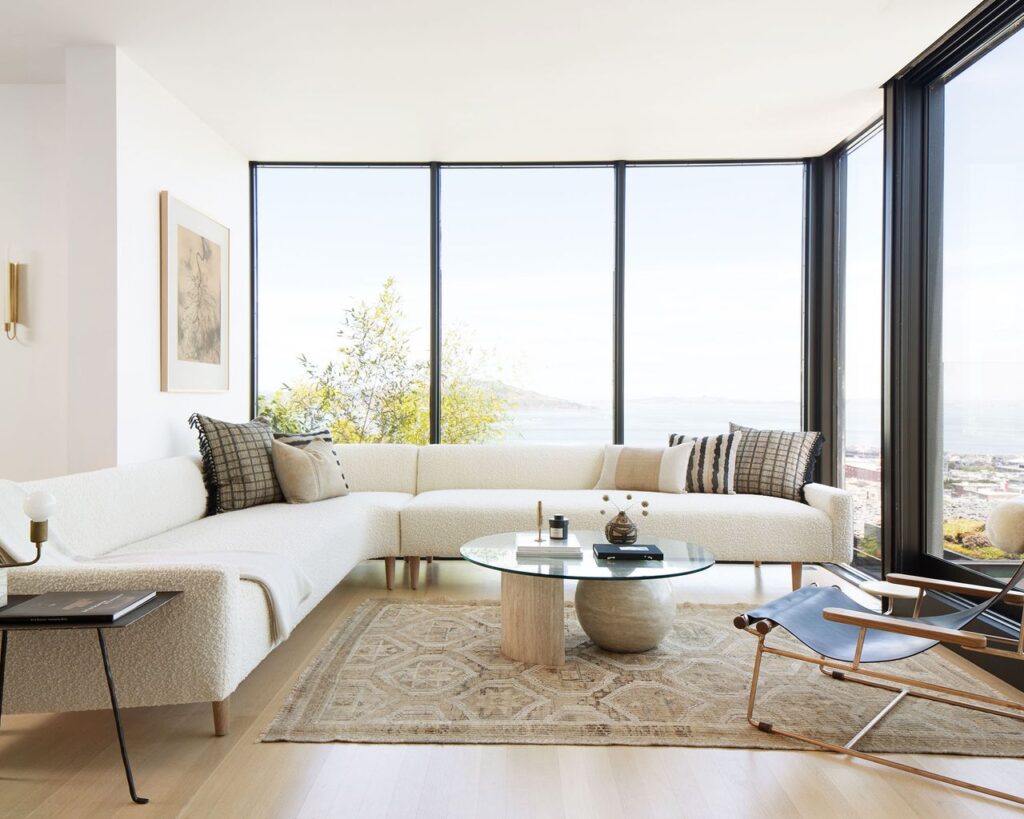
2. Furniture: Comfort, Functionality, and Simplicity
Scandinavian furniture is renowned for its clean lines, minimalist design, and focus on functionality. Think low-slung sofas with comfortable cushions, armchairs with organic curves, and coffee tables with ample storage. Avoid overly ornate or bulky pieces that can clutter the space. Opt for furniture made from natural materials like wood (particularly light-toned woods like birch and pine) and wool. The goal is to create a sense of warmth and tactility. Consider multi-functional furniture, such as a sofa bed or a coffee table with hidden storage, to maximize space and efficiency. Look for pieces that are not only aesthetically pleasing but also incredibly comfortable – the kind you can sink into after a long day.
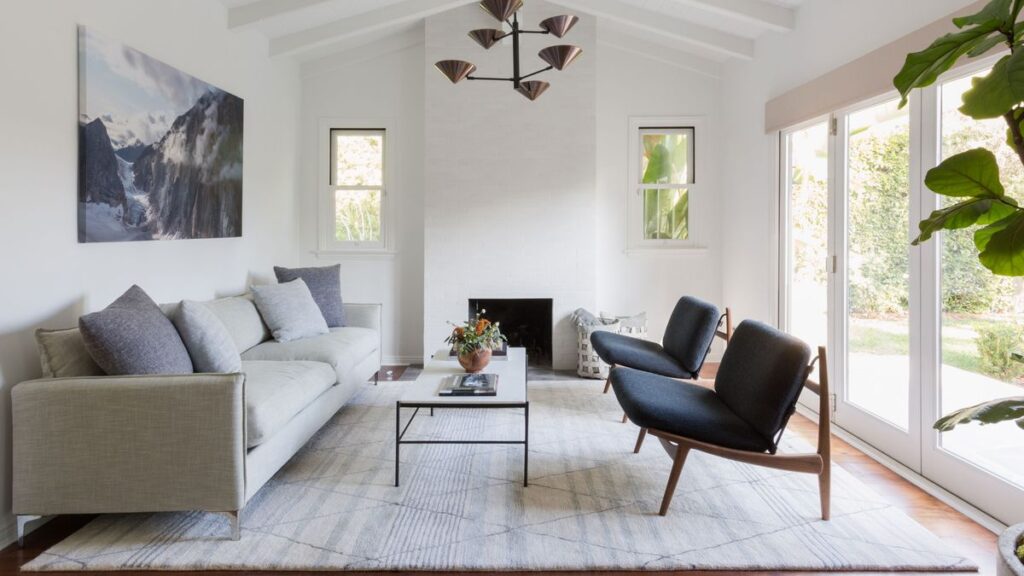
3. The Importance of Textiles: Adding Warmth and Texture
While Scandinavian design embraces minimalism, it doesn’t equate to coldness or starkness. Textiles play a crucial role in adding warmth, texture, and visual interest to the space. Think plush rugs, knitted throws, sheepskin cushions, and linen curtains. Layering different textures creates a sense of depth and comfort. Choose natural materials like wool, cotton, linen, and sheepskin for a cozy and inviting feel. Don’t be afraid to incorporate patterns, but keep them subtle and understated. Geometric prints, stripes, and simple floral motifs work well. The key is to create a tactile experience that engages the senses and makes the room feel warm and welcoming.
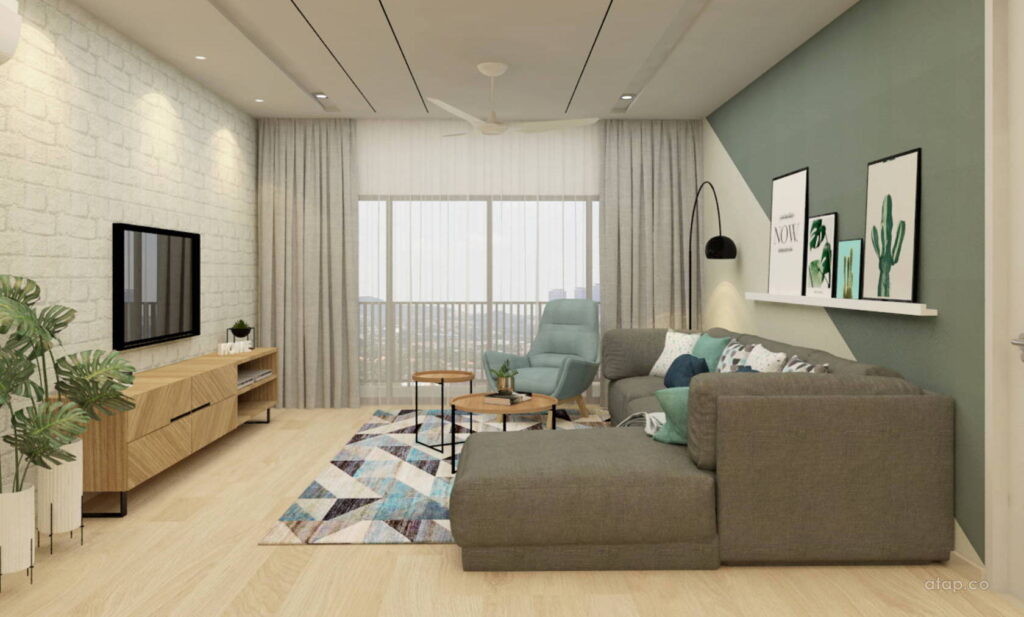
4. Color Palette: A Symphony of Neutrals with Pops of Color
The Scandinavian color palette is typically dominated by neutrals like white, gray, beige, and soft pastels. These colors create a sense of calm and serenity, while also maximizing light. However, don’t be afraid to add pops of color to inject personality and visual interest. Consider incorporating accent colors like blues, greens, yellows, or even a touch of black. These colors can be introduced through artwork, cushions, throws, or decorative objects. The key is to use color sparingly and strategically, creating a balanced and harmonious composition. Remember, the goal is to enhance the overall sense of tranquility, not to overwhelm the senses.
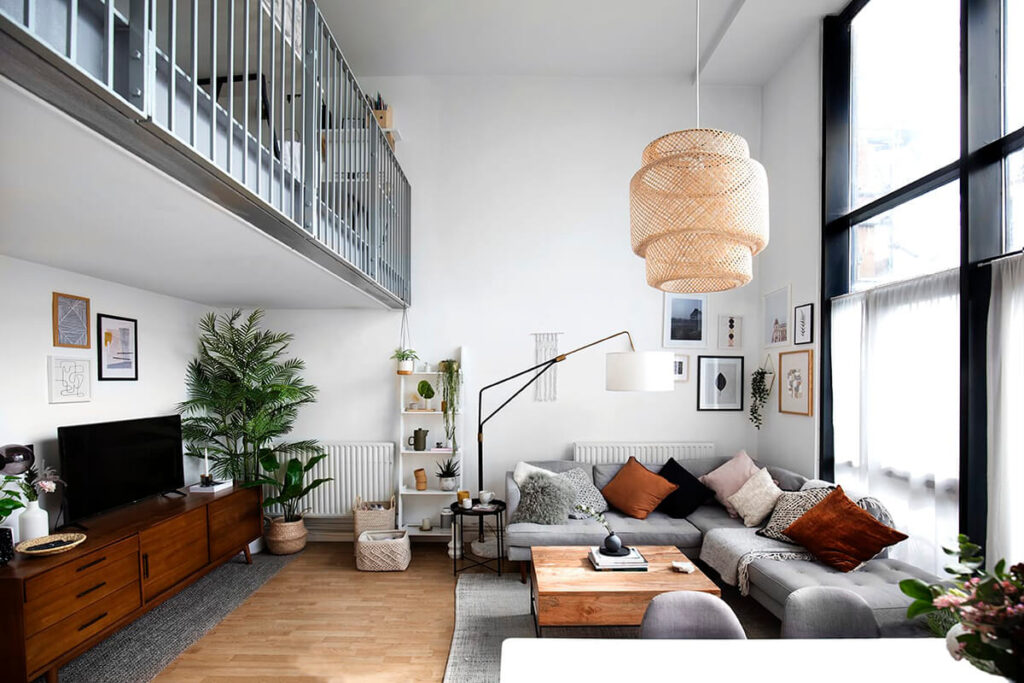
5. Decluttering and Organization: The Foundation of Serenity
A clutter-free space is essential for creating a Scandinavian living room. Embrace minimalism and get rid of anything that doesn’t serve a purpose or bring you joy. Invest in storage solutions that help you keep things organized and out of sight. Baskets, shelves, and cabinets are your best friends. The goal is to create a sense of calm and order, allowing you to relax and focus on what truly matters. Think of it as a form of visual hygiene – clearing away the clutter allows your mind to breathe and find peace.
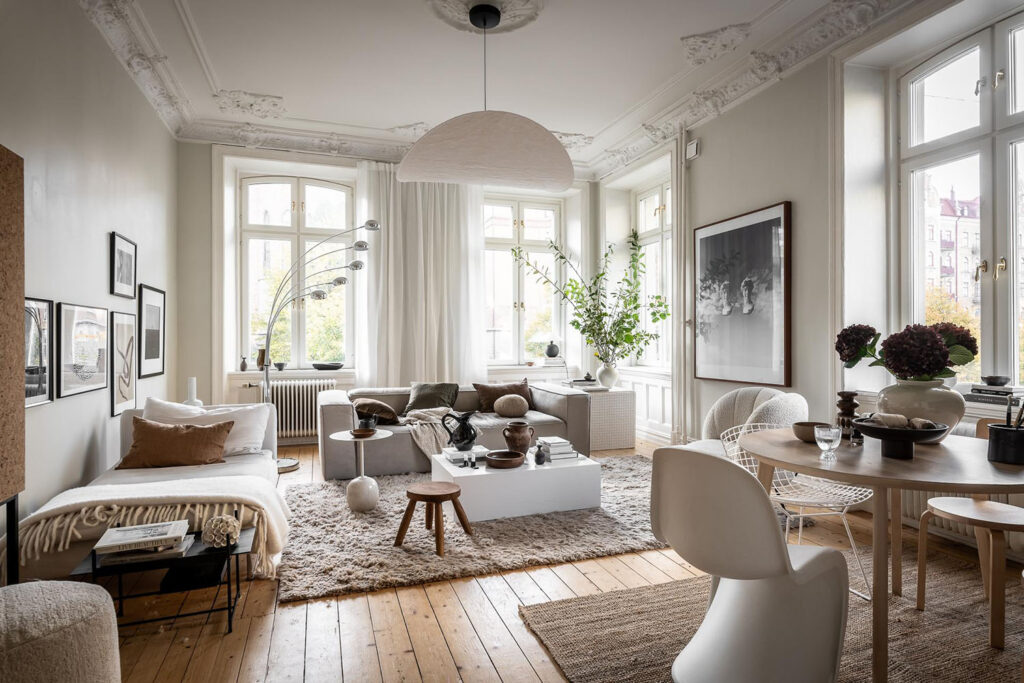
6. Biophilic Design: Bringing the Outdoors In
Scandinavians have a deep connection to nature, and this is reflected in their design aesthetic. Incorporate plants and natural elements into your living room to create a sense of connection to the outdoors. Plants not only add visual interest but also purify the air and create a more relaxing atmosphere. Choose plants that thrive in indoor environments, such as snake plants, spider plants, or succulents. You can also incorporate natural elements like wood, stone, and leather into your décor. Consider displaying branches, pinecones, or other natural objects in vases or bowls. The goal is to bring the beauty of nature indoors, creating a more harmonious and grounding space.
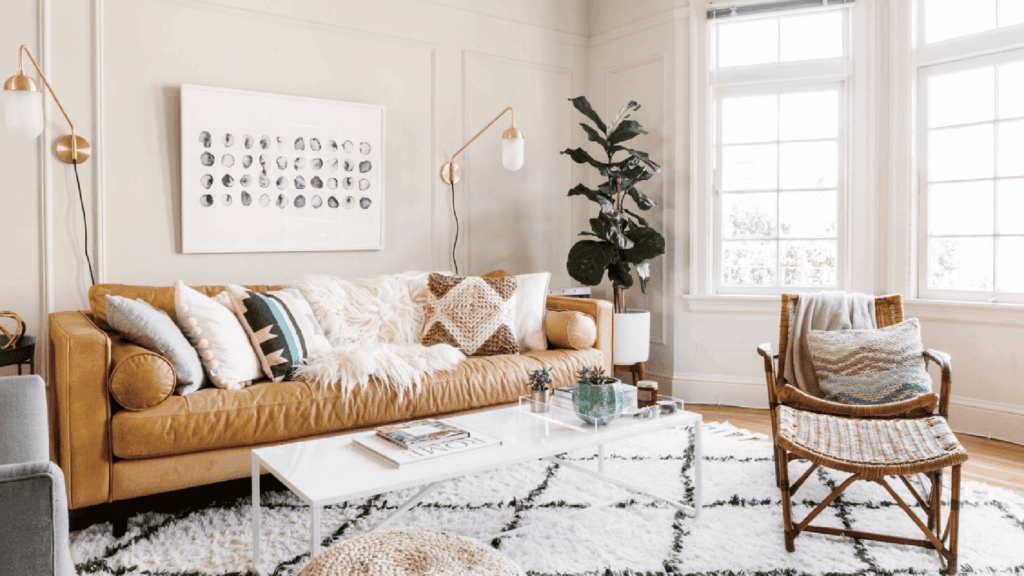
7. Lighting: Creating Ambiance and Warmth
While natural light is crucial, artificial lighting is equally important, especially during the long winter months. Layer your lighting to create a warm and inviting ambiance. Use a combination of overhead lighting, floor lamps, and table lamps to provide different levels of illumination. Choose warm-toned bulbs to create a cozy and inviting atmosphere. Consider using dimmer switches to adjust the lighting to suit your mood. Candles are also a great way to add warmth and ambiance to your living room. Place them strategically around the room to create a soft and flickering glow. The right lighting can transform a space, creating a sense of comfort and relaxation.

Mastering the Layout: Specific Considerations
Now that we’ve covered the key elements, let’s delve into some specific considerations for arranging your Scandinavian living room layout:
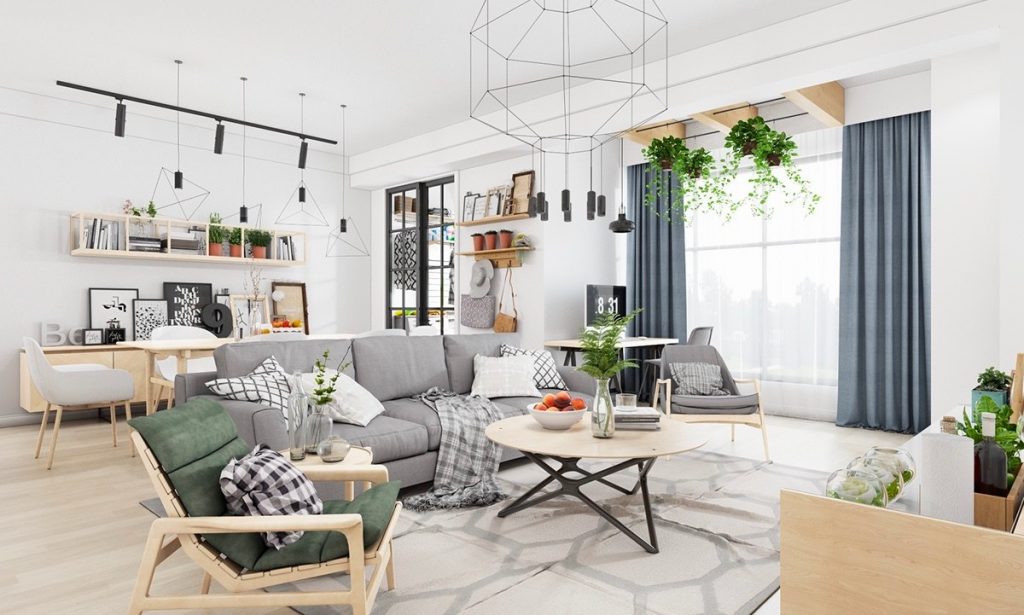
1. The Focal Point: Anchoring the Space
Every living room needs a focal point – a central element that draws the eye and anchors the space. This could be a fireplace, a large window with a view, a striking piece of artwork, or even a media console. Arrange your furniture around the focal point to create a sense of balance and harmony. For example, if you have a fireplace, you might place a sofa and armchairs facing it, creating a cozy and inviting seating area. The focal point should be the visual anchor of the room, guiding the flow of movement and creating a sense of purpose.
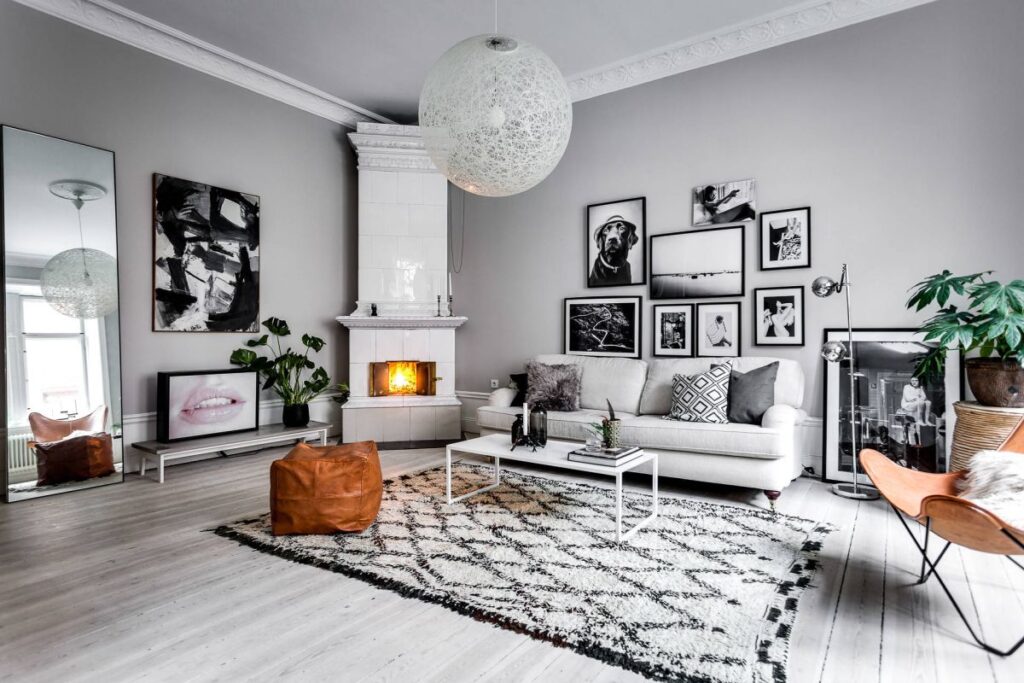
2. Creating Conversation Areas: Promoting Social Interaction
A well-designed living room should encourage conversation and social interaction. Arrange your furniture in a way that promotes face-to-face communication. Avoid placing furniture against the walls, as this can create a feeling of isolation. Instead, create intimate seating areas by grouping sofas and armchairs together. Consider adding a coffee table or ottoman in the center of the seating area to provide a place to rest drinks and snacks. The goal is to create a space where people feel comfortable and connected, fostering meaningful conversations and shared experiences.

3. Traffic Flow: Ensuring Smooth Movement
Consider the traffic flow when arranging your furniture. Make sure there’s enough space to move around the room comfortably without bumping into furniture. Avoid creating obstacles or bottlenecks that can disrupt the flow of movement. Leave ample space between furniture pieces and doorways. Think about how people will enter and exit the room, and arrange your furniture accordingly. A well-planned traffic flow will make the room feel more spacious and inviting, promoting a sense of ease and relaxation.
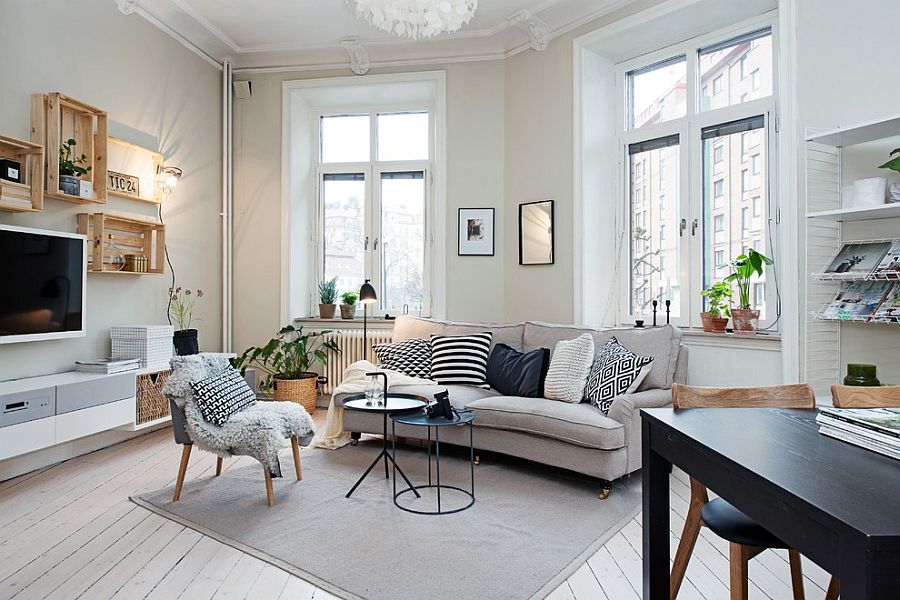
4. Scale and Proportion: Creating Visual Harmony
Pay attention to the scale and proportion of your furniture. Choose pieces that are appropriately sized for the room. Avoid overcrowding a small room with large, bulky furniture. Conversely, don’t choose furniture that is too small for a large room, as this can make the space feel empty and impersonal. Consider the height, width, and depth of each piece of furniture, and make sure it’s in proportion to the other elements in the room. A balanced and harmonious composition will create a sense of visual appeal and comfort.
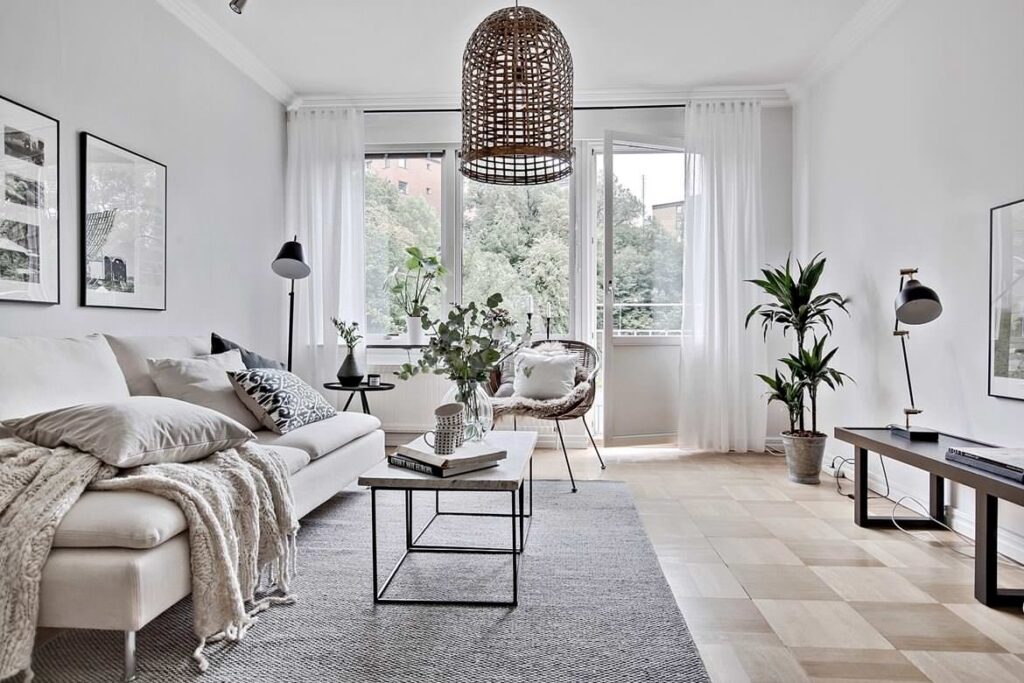
5. Rug Placement: Defining Zones and Adding Warmth
Rugs are an essential element in Scandinavian living room design. They define zones, add warmth, and create a sense of visual interest. Choose a rug that is large enough to anchor the seating area. Ideally, the front legs of your sofa and armchairs should be on the rug. If you have a small room, you can choose a smaller rug that sits entirely under the coffee table. Consider the color, pattern, and texture of the rug. Choose a rug that complements the other elements in the room and adds a touch of personality. A well-chosen rug can transform a space, creating a sense of warmth, comfort, and style.
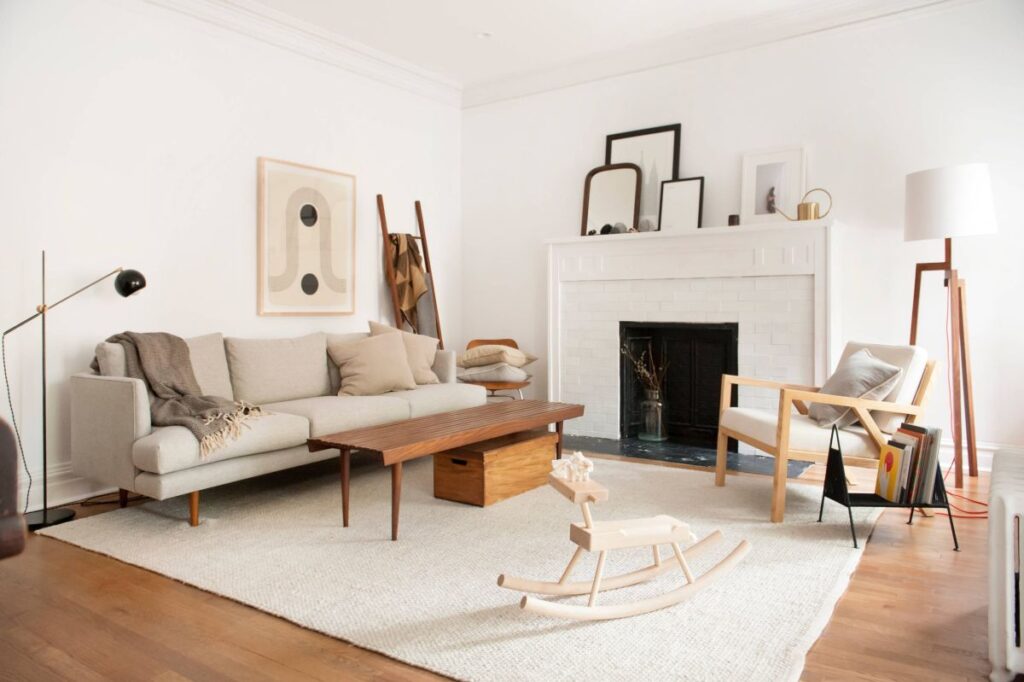
Scandinavian Living Room Layout Ideas: Inspiration and Examples
Let’s explore some specific layout ideas to spark your creativity:
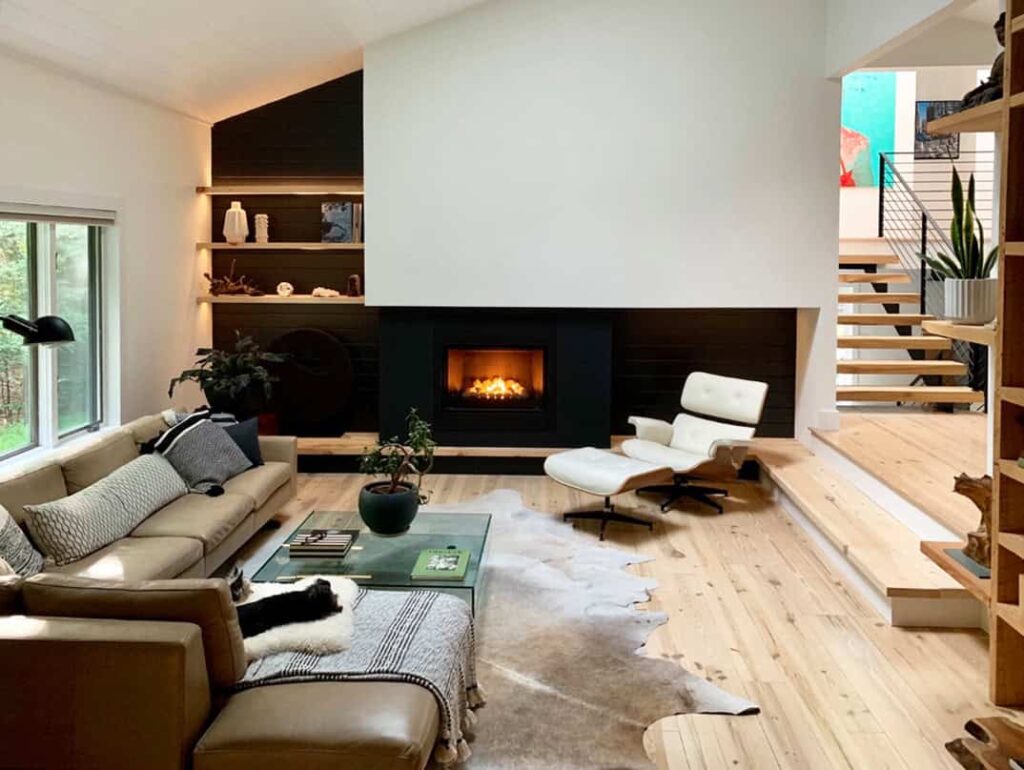
1. The Classic Scandinavian Layout: Sofa, Armchairs, and Coffee Table
This is the most common and versatile layout for a Scandinavian living room. Place a sofa against one wall, facing a pair of armchairs and a coffee table. Add a rug to define the seating area and create a cozy atmosphere. This layout works well in both small and large rooms and provides ample seating for conversation and relaxation.
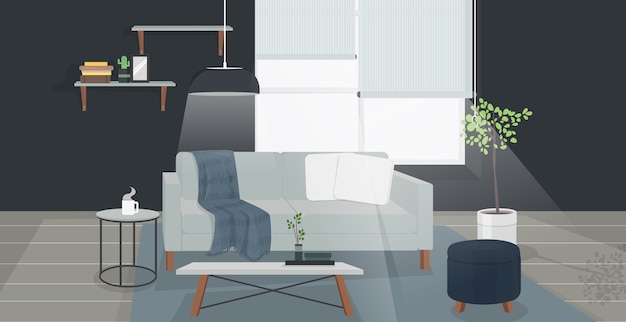
2. The Sectional Sofa Layout: Maximizing Seating and Comfort
If you have a large family or frequently entertain guests, a sectional sofa is a great option. Place the sectional sofa against two walls, creating a corner seating area. Add a coffee table in the center and a few accent chairs to provide additional seating. This layout maximizes seating capacity and creates a comfortable and inviting space for socializing.
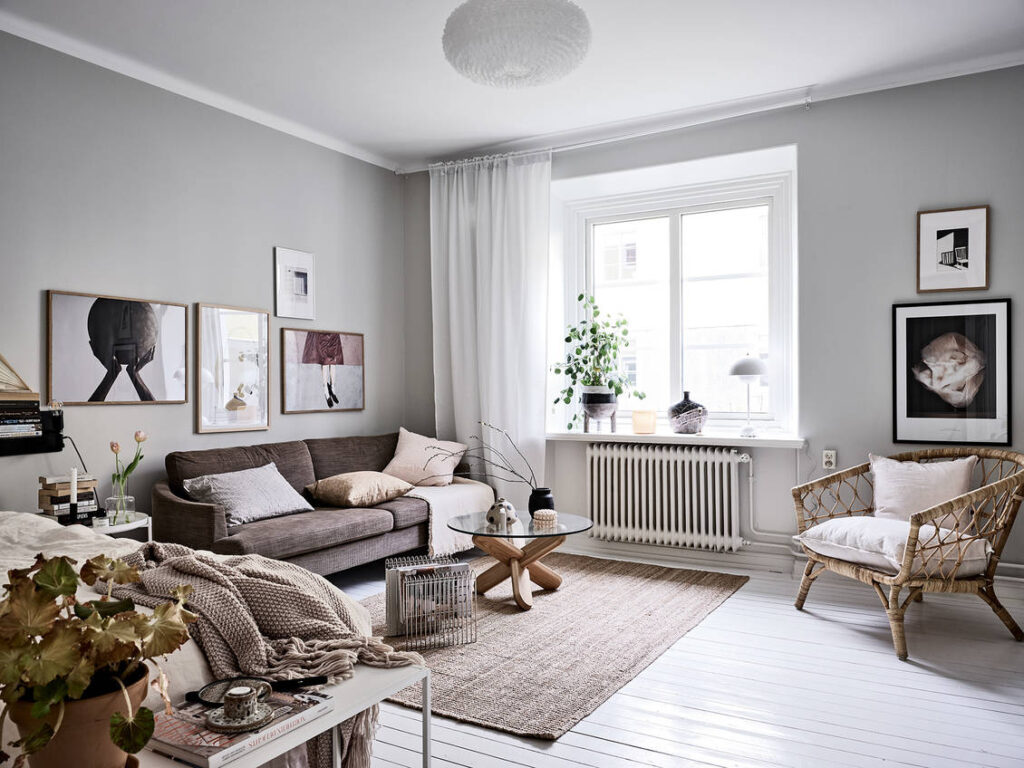
3. The Fireplace-Focused Layout: Creating a Cozy Retreat
If you have a fireplace, make it the focal point of your living room. Place a sofa and armchairs facing the fireplace, creating a cozy and inviting seating area. Add a rug to define the space and a few throw blankets and cushions to enhance the comfort. This layout is perfect for creating a warm and intimate atmosphere, especially during the colder months.
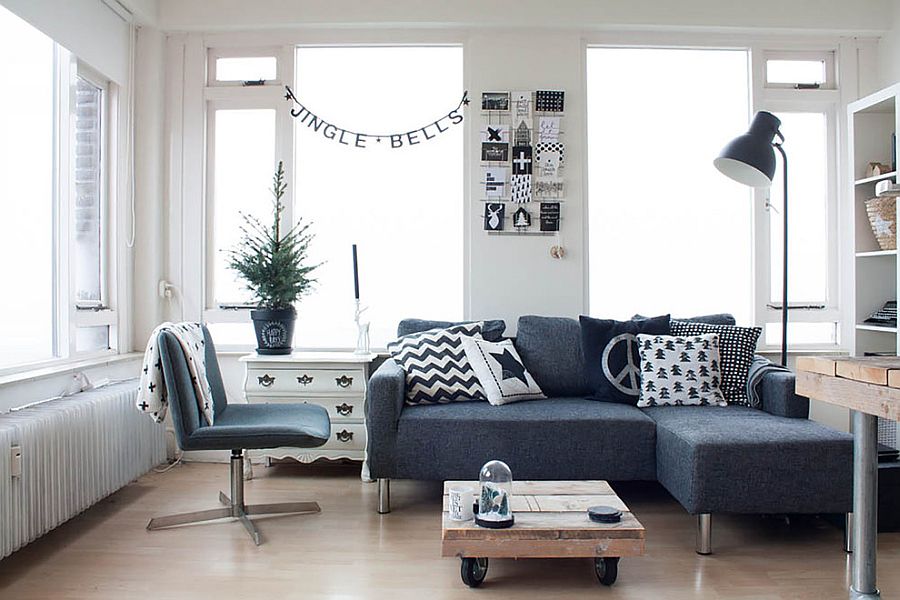
4. The Media-Centered Layout: Balancing Entertainment and Style
If you spend a lot of time watching TV or movies, you might want to consider a media-centered layout. Place a media console against one wall and arrange your furniture around it. Make sure the seating is comfortable and provides a good viewing angle. Consider adding blackout curtains to reduce glare and create a more immersive viewing experience. This layout balances entertainment with style, creating a functional and aesthetically pleasing space.
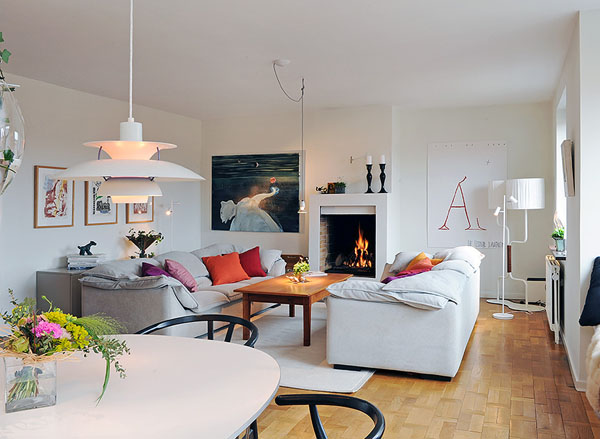
Common Mistakes to Avoid: Maintaining the Scandinavian Aesthetic
Even with the best intentions, it’s easy to make mistakes when designing a Scandinavian living room. Here are some common pitfalls to avoid:

- Over-Cluttering: Resist the urge to fill every nook and cranny with decorative objects. Embrace minimalism and keep the space clutter-free.
- Ignoring Natural Light: Don’t block windows with heavy curtains or furniture. Maximize natural light whenever possible.
- Using Too Many Dark Colors: Dark colors can make a room feel smaller and less inviting. Stick to a neutral color palette with pops of color.
- Choosing Uncomfortable Furniture: Scandinavian design is all about comfort and functionality. Don’t sacrifice comfort for style.
- Forgetting the Textiles: Textiles are essential for adding warmth and texture to a Scandinavian living room. Don’t neglect this important element.
Beyond the Basics: Personalizing Your Scandinavian Sanctuary
While adhering to the core principles of Scandinavian design is important, don’t be afraid to personalize your living room and make it your own. Add artwork, decorative objects, and personal touches that reflect your unique style and personality. The goal is to create a space that feels authentic and inviting, a true reflection of who you are. Consider incorporating family heirlooms, travel souvenirs, or handcrafted items. These personal touches will add character and warmth to your living room, making it a place you truly love to be.
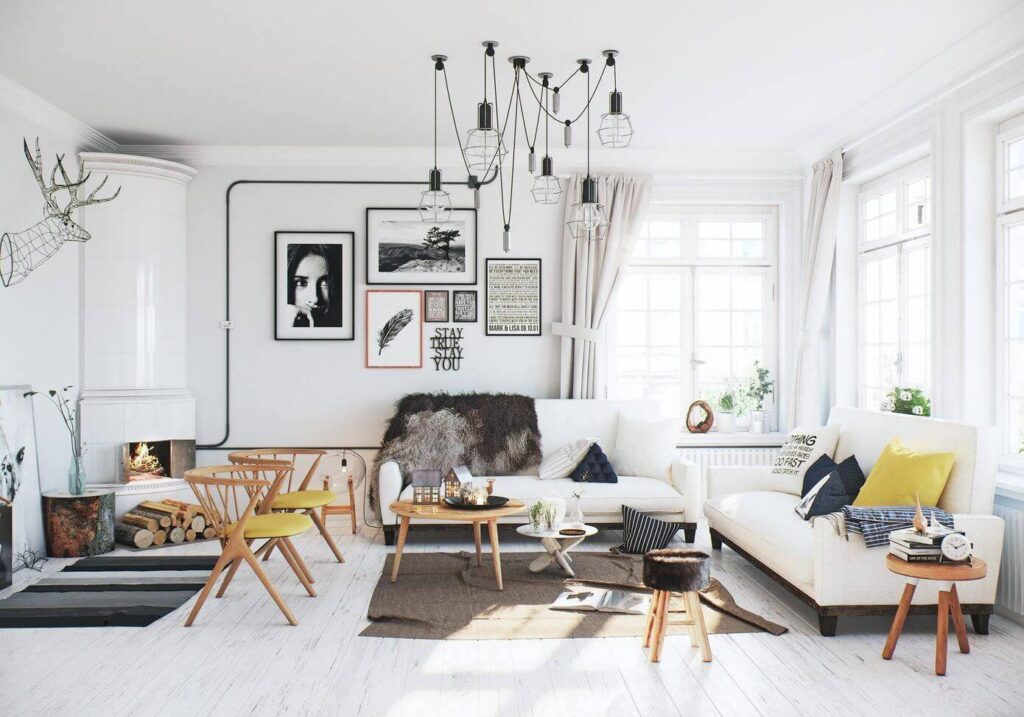
The Enduring Appeal of Scandinavian Design: A Timeless Choice
The enduring appeal of Scandinavian design lies in its simplicity, functionality, and emphasis on comfort. It’s a timeless aesthetic that transcends trends and creates spaces that are both beautiful and livable. By mastering the principles of Scandinavian living room layout, you can create a sanctuary that promotes relaxation, connection, and well-being. It’s more than just a design style; it’s a way of life. It’s about embracing hygge, finding joy in the simple things, and creating a space that nurtures your soul.
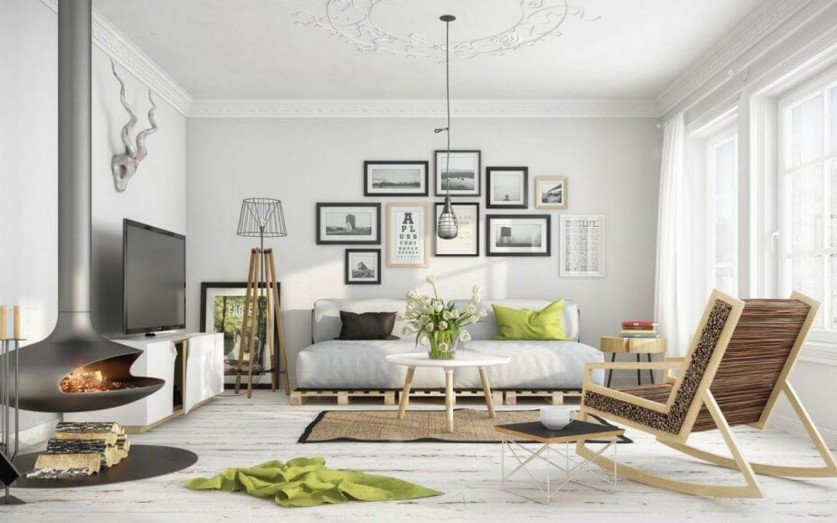
So, go ahead and embrace the Scandinavian spirit! Declutter, simplify, and create a living room that is both beautiful and functional. Your hygge haven awaits!

 Nimila
Nimila
